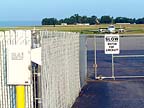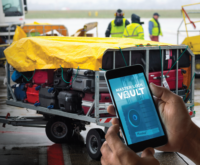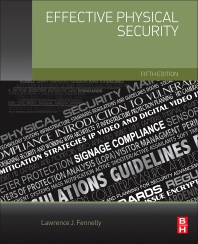
Located in the foothills of the Ozark Mountains, the Batesville Regional Airport, established in the 1970s, always has been closely tied to the economic growth of the nearby city of Batesville, which is 90 miles north of Little Rock, Ark.
Technology is expanding business in the area. The city reports the economic intake is evenly divided between industry, agriculture and tourism. With such regional economic growth, the airport naturally garnered a bustle of busy travelers, reports Mary Amos, airport facility manager.
A total of 40 aircraft are based on-site. Amos reports the airfield began extensive infrastructure renovations around 2003, which included all-around tightening of security access to comply with airport safety standards following the terrorist attacks of Sept. 11, 2001. A new security fence was installed, which raised the bar on ramp control by limiting access only to employees.
During the renovation, managers searched for a gate control and identification device to install at the security fence. A reader at the entry point would identify tagged vehicles and authorize their entry. Although they set a limit on cost, high efficiency would not be compromised.
Soon afterward, Amos approached Luther Bearden of Bearden Construction in Batesville. The dealer specializes in security access control mechanisms, such as readers and gate operators. Having overseen many security installations, he knew an effective system was needed that would not break the airport’s operation budget.
He had already thought of a reader mounted at every entry point to read a unique bar code decal attached to a moving vehicle. Once the decal is read, a signal goes to the gate and access is granted or denied.

ID numbers at most gated locations start at one and go up. The problem is, if two facilities are close to each other, how can people with the same ID numbers be prevented from getting in where they should not? By using facility codes.
The first three digits of the bar code are the facility code, which is different for each gated location. If someone tries to enter with the wrong facility code, access will be denied, even if his or her individual ID code is valid. The facility code is not printed on the decal where humans can read it.
Rain or fog will not affect bar code readers until it is impossible to physically see across the six-foot reading distance. The decals have a waterproof adhesive backing that will last for up to five years, making it hard to remove or steal. Once installed, regular maintenance on the equipment consists of cleaning the optics and reader window.
With key elements carefully considered, Bearden suggested the BA-200 bar code reader by Bar Code Automation Inc., Winter Springs, Fla. It is a heavy-duty modular system with internal temperature control, which unlike RFID, is immune to interfering radio frequencies.
The manufacturer also offers retro-reflective bar code decals for approximately $3 each, compared to a $29 transmitter. The reader rejects photocopies.

Although environmental changes were not a factor at Batesville, Bearden still appreciated having a reliable access control system close to his home.
“I knew it would work,†Bearden emphasized. “I wanted to install something that would not break down. That reader at Batesville has proven to be very reliable under all kinds of use. It can get pretty beat-up out there, and it keeps on working.â€
The bar code reader acts as a standalone access control unit that directly triggers the entry gate. No other surveillance equipment currently is installed along the fenced line, and the unit is not integrated with other monitoring equipment.
The reader is programmed to grant or deny access to certain individual numbers. When a vehicle moves by the reader, it checks to see if that number has access. The reader can recognize a vehicle and transmit only one time per decal.
Bearden adds that work continues at the airfield. In the near future, after further extension to the fence line around the field is completed, another gated entry will be opened and a second bar code reader is scheduled to be installed at that site.
The system has been in place for more than two years, and so far, operating expenses have been minimal, Amos maintains. It works well for the airport crew, is convenient and saves time. Amos reports they are happy with the reader’s performance.
The bar code decals and system components are compatible with access control systems via Wiegand 26-bit output or can connect to a computer security system via the RS232 interface. They are ETL-listed to UL STD 294.
As for weather resistance, the reader is encased in a NEMA 4 standard aluminum box with internal temperature and humidity control for extended laser life and better system reliability. An internal transaction log displays the last 2,000 vehicle identification numbers, times and dates.
“The BA-200 provides a critical, higher level of security to the airport,†Amos stresses. “We have never considered anything else.â€
Side bar1: On the Job
- Bar Code Automation Inc. BA-200 bar code reader
- 115/230 VAC with optional 24 VDC
- ETL-listed to meet UL STD 294
- Visible laser diode, unidirectional scanning type
- 400 per second scan rate
- Reads various colors of retro-reflective decals


